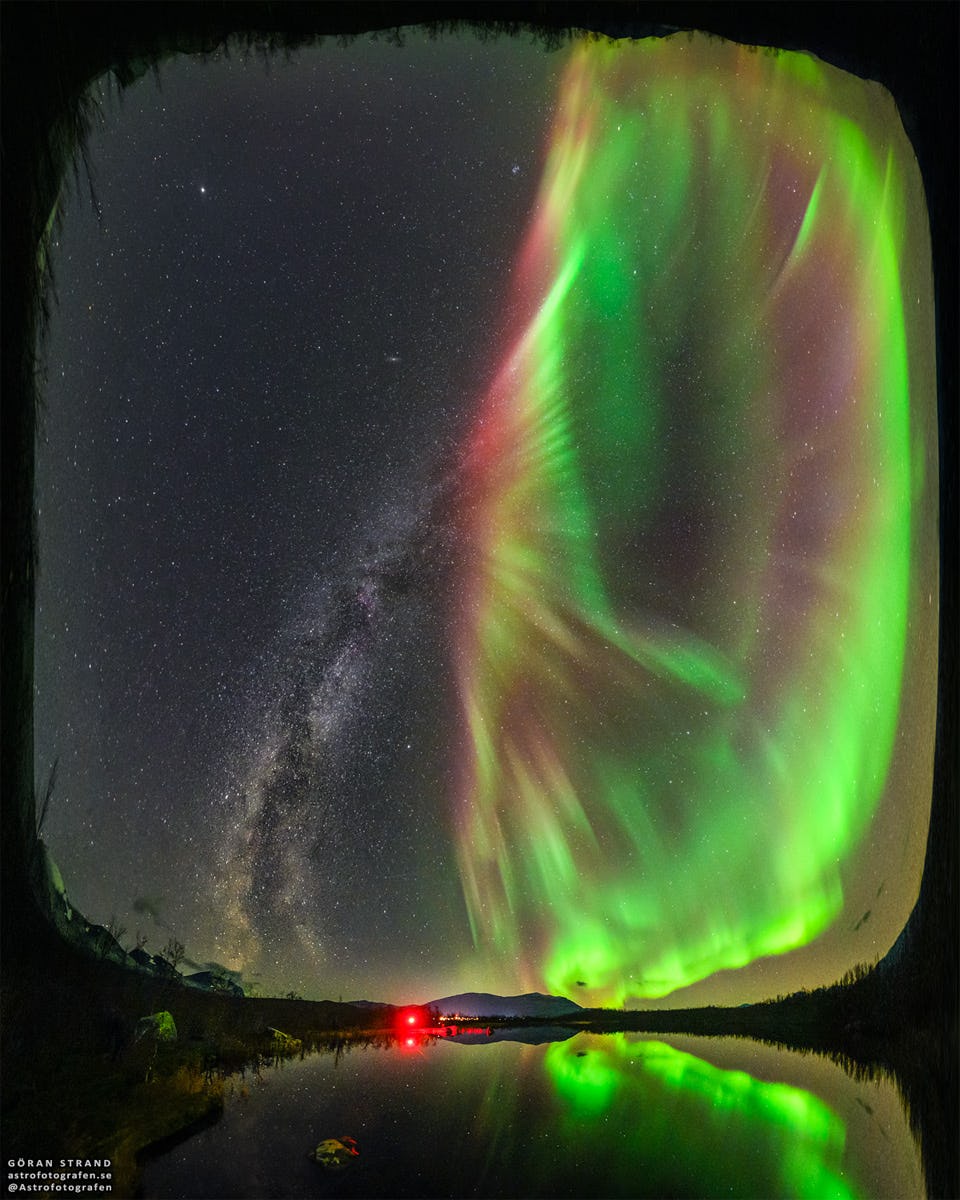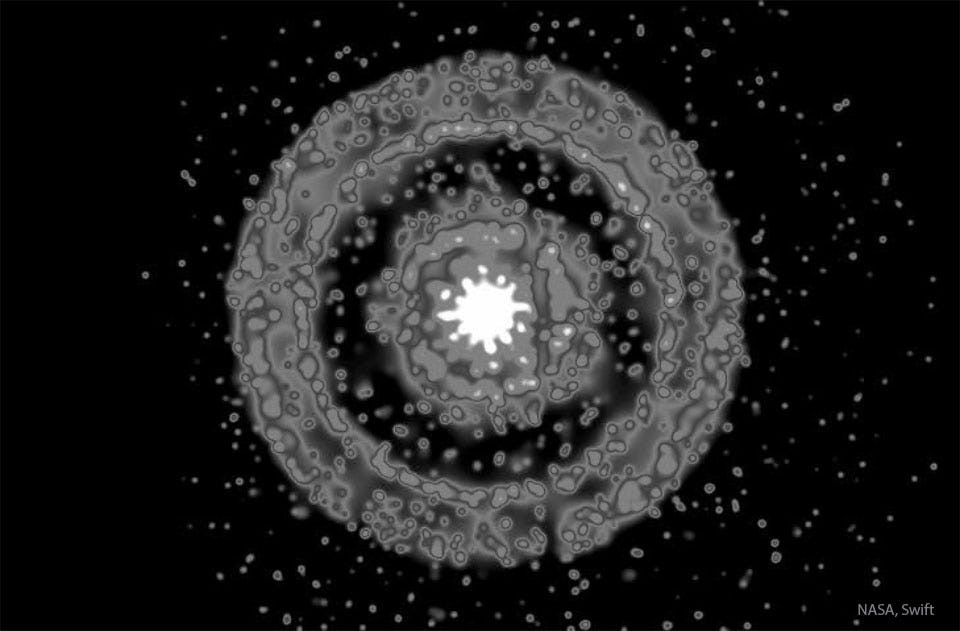Love is elusive,
running to hide.
Love should always
be by your side.
Public Posts Bellevue, WA Bellevue, WA (zoom)
NASA Astronomy Picture of the Day:
Could the stem of our Milky Way bloom into an auroral flower? No, not really, even though it may appear that way in today’s featured all-sky image. On the left, the central plane of our home galaxy extends from the horizon past the middle of the sky. On the right, an auroral oval also extends from the sky's center -- but is dominated by bright green-glowing oxygen. The two are not physically connected, because the aurora is relatively nearby, with the higher red parts occurring in Earth's atmosphere only about 1000 kilometers high. In contrast, an average distance to the stars and nebulas we see in the Milky Way more like 1000 light-years away - 10 trillion times further. The featured image composite was taken in early October across a small lake in Abisko, northern Sweden. As our Sun's magnetic field evolves into the active part of its 11-year cycle, auroras near both of Earth's poles are sure to become more frequent.
Photo by Göran Strand
Drain the swamp.
Reclaim the land,
living your life,
stop being so bland.
There are many means,
in this World today,
so pay more attention
and do it your way.
Open the book of goodness,
of memories still retained.
You will find your blessing,
of life's enjoyment gained.
Draw upon the words you see,
reading them every day,
before the saddest of disease,
robs you, taking them away.
Once lived the troll, Orion,
from out the bridge he peeked,
a figure of forgiveness
to help those who seek.
"What hath thy wrought?"
I would hear Orion say.
"Have you brought the goodness,
we need most, every day?"
There was no reply or movement,
someone would always say.
Now there was indifference
and we will go away.
When the twisted tails of Dragons,
stretched across the jaded skies,
as if comprised of insects
disguised as Fireflies.
Hot bursts of flames
from out the Dragon's mouth,
as it moved from East to West,
fading in the darkening South.
No stars nor moon were sparkling
or shedding any light,
as a night once eerily quiet
was painted red and white.
No more the Sun's reflection,
no more the proud display,
for now, the Golden Dragons
are gone. Now gone away.
I'm going to try
changing my ways.
Life is too short,
not enough days.
NASA Astronomy Picture of the Day:
Why would x-ray rings appear around a gamma-ray burst? The surprising answer has little to do with the explosion itself but rather with light reflected off areas of dust-laden gas in our own Milky Way Galaxy. GRB 221009A was a tremendous explosion -- a very bright gamma-ray burst (GRB) that occurred far across the universe with radiation just arriving in our Solar System last week. Since GRBs can also emit copious amounts of x-rays, a bright flash of x-rays arrived nearly simultaneously with the gamma-radiation. In this case, the X-rays also bounced off regions high in dust right here in our Milky Way Galaxy, creating the unusual reflections. The greater the angle between reflecting Milky Way dust and the GRB, the greater the radius of the X-ray rings, and, typically, the longer it takes for these light-echoes to arrive.
Another evening
with words fraught,
"Do you love me?
or do you not?
How delicate must
her life now be,
when she says,
"You don't like me."
For life's assurances,
it is her crying word.
I say, "I love you,"
she knows I've heard.
I am sadness,
come with me
to the shore
of your sadness sea.
George Santayana - (1863 – 1952) ~ Jorge Agustín Nicolás Ruiz de Santayana y Borrás, was a philosopher, essayist, poet, critic and novelist. Born in Spain and raised and educated in the US from the age of eight. He left his position at Harvard at the age of 48 and returned to Europe permanently. Santayana was the author of many books and known for his aphorisms. He was profoundly influenced by Spinoza's life and thought. Although he was an atheist, he treasured the Spanish Catholic values, practices, and worldview in which he was raised.
A Comment by Loy

I love this photo!








.jpg?fit=crop&w=280&h=280&q=93)














 - Copy.jpg?fit=crop&w=280&h=280&q=93)














